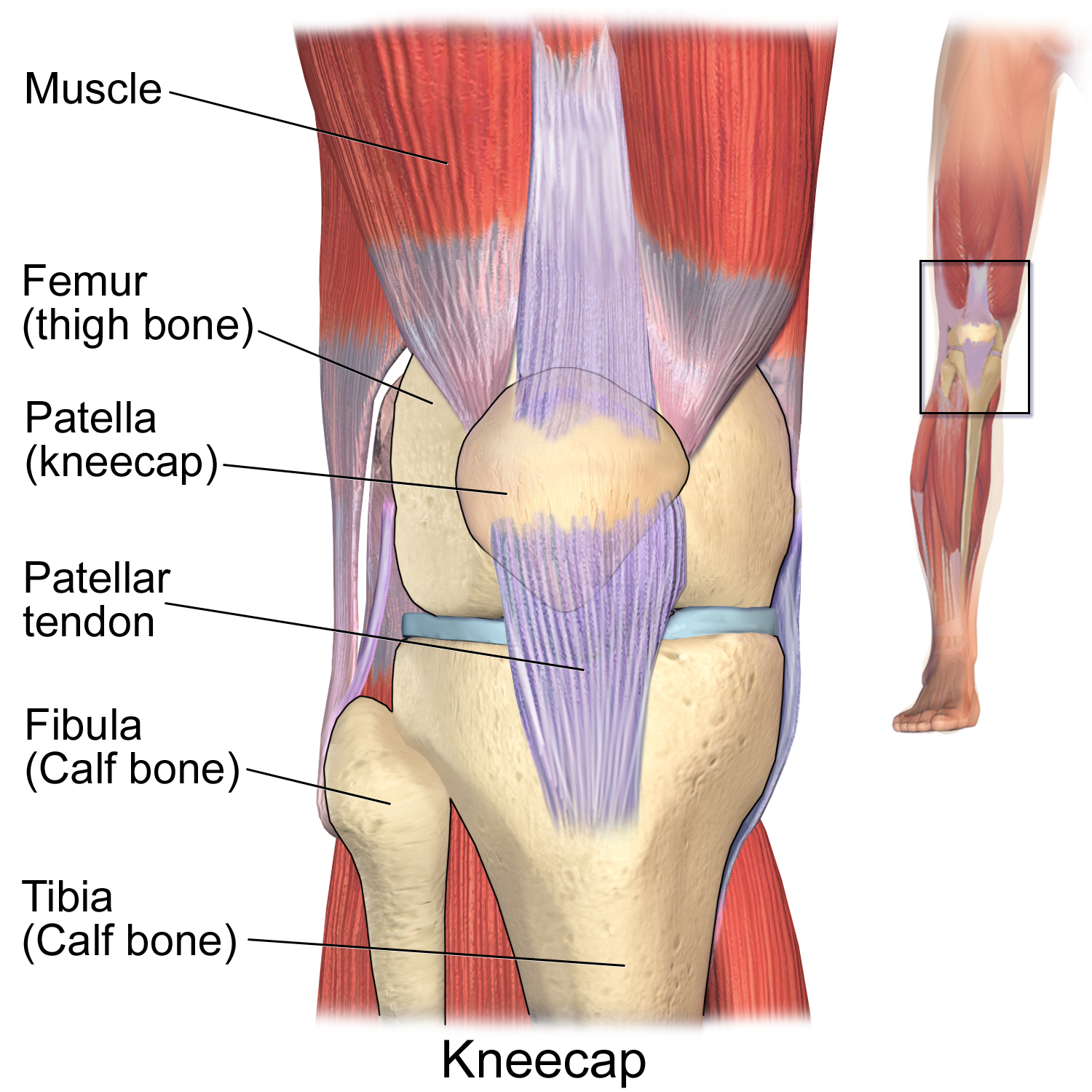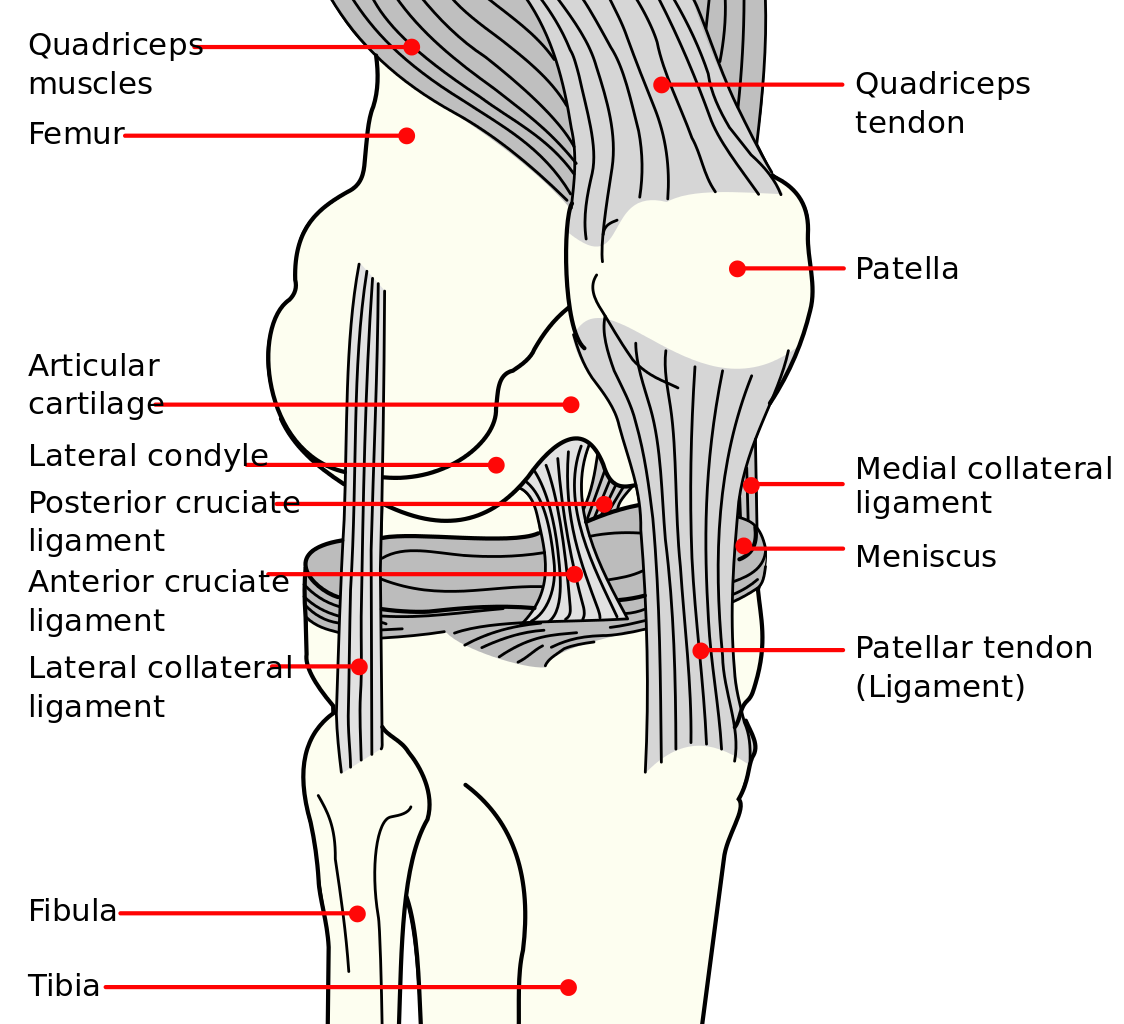Introduction
I was first introduced to subluxation of the proximal tibio fibular joint in a webinar, produced by a wonderful EDS awareness organization called Chronic Pain Partners, featuring Dr. Pradeep Chopra, a well-respected name in the EDS community:
He begins discussing this particular knee issue at time stamp 1:39:12, but I recommend watching the whole video if you have time!
What do we mean when we talk about the proximal tibiofibular joint?

We simply mean the outside of the knee, where the top (also known as the “head”) of the fibula (the small calf bone), connects to the tibia (the shin bone) at the knee. This image shows the connections a bit better:

It seems some people experience this instability as knee locking, and if that sounds familiar to you, then I recommend checking out KneeLock.com. There’s a good explanation based on the author’s personal experiences and links to several resources.
Medical Literature
As Dr. Chopra notes, this is an under-recognized source of pain, and there isn’t much medical literature about it. These are the best medical journal articles I could find:
Proximal tibiofibular joint: Rendezvous with a forgotten articulation
- Sarma A, Borgohain B, Saikia B. Proximal tibiofibular joint: Rendezvous with a forgotten articulation. Indian Journal of Orthopaedics. 2015;49(5):489-495. doi:10.4103/0019-5413.164041.
- Pretty comprehensive description of the joint with useful diagrams and suggestions for treatment
- A more recent article, published in 2015
- Ronna H. Semonian, PT, OCS, ATC, Piper M. Denlinger, PTA, ATC, Robert J. Duggan, ATC, DPM, FACFAS.Proximal Tibiofibular Subluxation Relationship to Lateral Knee Pain: A Review of Proximal Tibiofibular Joint Pathologies. Journal of Orthopaedic & Sports Physical Therapy, 1995. Volume: 21, Issue: 5, Pages: 248–257. DOI: 10.2519/jospt.1995.21.5.248
- An older article, published in 1995
- Specific to subluxation, lots of really good diagrams of the anatomy
- Also good pictures demonstrating how to stabilize with a knee strap
Easily Missed Injuries Around the Knee
- G W Capps, and C W Hayes. Easily Missed Injuries Around the Knee. RadioGraphics 1994; 14: 1191-1210. DOI: http://dx.doi.org/10.1148/radiographics.14.6.7855335
- Covers lots of knee injuries; proximal tibiofibular joint dislocation featured on pages 1198 – 1199
- Has images of actual X-rays showing dislocation
Dislocation of the Upper End of the Fibula
- (1959). DISLOCATION OF THE UPPER END OF THE FIBULA. Bone & Joint Journal, 41-B(1), 114-120. Accessed April 25, 2017.Retrieved from http://www.bjj.boneandjoint.org.uk/content/41-B/1/114.
- A much, much older article from 1959!
- Lots of X-ray images
Proximal tibiofibular dislocation
- Horan J, Quin G. Proximal tibiofibular dislocation. Emergency Medicine Journal : EMJ. 2006;23(5):e33. doi:10.1136/emj.2005.032144.
- Less comprehensive article, but newer
- Case study of a dislocation
Is Stability of the Proximal Tibiofibular Joint Important in the Multiligament-injured Knee?
- Jabara M, Bradley J, Merrick M. Is Stability of the Proximal Tibiofibular Joint Important in the Multiligament-injured Knee? Clinical Orthopaedics and Related Research. 2014; 472(9):2691-2697. doi:10.1007/s11999-014-3574-1.
- Another much more recent article from 2014
- Focused on instability in the context of other knee injuries and how it complicates treatment
Dislocation of the proximal tibiofibular joint: A new method of fixation
- B. Lenehan, , T. McCarthy, J. Street, M. Gilmore. Dislocation of the proximal tibiofibular joint: A new method of fixation. Injury Extra. Volume 37, Issue 10, October 2006, Pages 385–389. http://doi.org/10.1016/j.injury.2006.02.058.
- Another case study
- Features a surgical solution aimed at stabilizing the joint
Subluxation of the Proximal Tibiofibular Joint
- Ogden, John A. M.D. Subluxation of the Proximal Tibiofibular Joint. Clinical Orthopaedics & Related Research: June 1974 – Volume 101 – Issue – ppg 192-197.
- Another older article, from 1974
- Actually mention a patient having Ehlers-Danlos syndrome in connection to the subluxation
- Unfortunately, only the first page is available for free
What Do I Do?
I have a lot of knee pain on most days, just general aches, and if it is particularly bothersome, I’ll put on my compression knee braces. I use FUTURO Comfort Lift Knee Support because that’s what I found at the store when I went shopping. If I were going to buy them again I might go for the FUTURO Stabilizing Knee Support.
When I have an episode of acute stabbing pain, I generally just RICE (rest, ice, compress, elevate), although from what I read this wisdom is starting to come into question.
I had my knees x-rayed recently, and I’ve been given the images but have yet to receive the radiologist’s report.
And of course, this is not medical advice, this is just me sharing my experiences with the world. If you are experiencing this pain, you should be talking to your doctor and finding the right specialist to treat you! I hope these resources can help you and your doctor find the best path to beneficial treatments.
Please leave a comment on your experiences with knee pain!
I have Ehlers danlos syndrome and just got diagnosed with reoccurring proximal tibiofibular dislocation. I have been having issues for over three years and finally got a diagnosis. I have a surgery date of November 24th. They will be doing the suture button and tightrope fixation.
I’m so glad you were (finally!) able to get a diagnosis. Best of luck with the surgery, too! I hope it is a good, long term fix!!
I ha e been trying to tell
Doctors over the last 9 years I believe I have proximal fibulae subluxation. Mine started after hip surgery to repair my acute labrum tear. I was 29 at the time this was a personal training injury. I believe the fixation device used to stabilize my leg during surgery and give traction caused this instability in my knee/shin to start.
I have ver sharp pain and unable to bear weight. This often occurs I’ve noticed acted crossing my legs. Or side lying over night. Has anybody else experienced positional instability or point of pressure tyke instability??